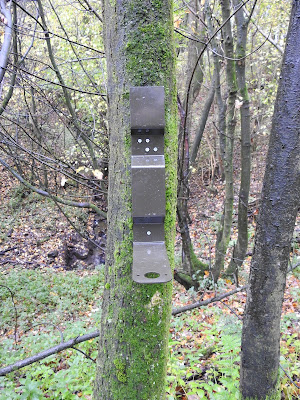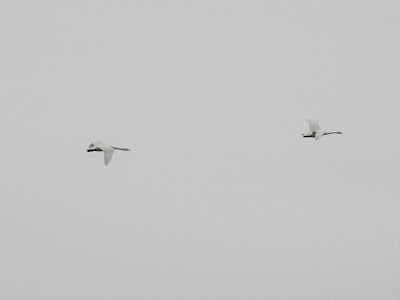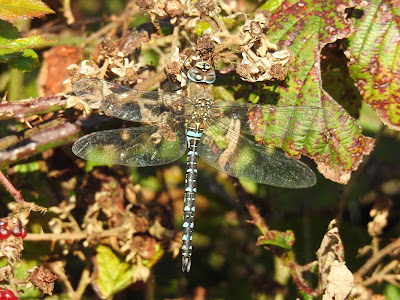I know I probably don't need to tell you, but here in northwest England the weather has been pretty awful for nearly ten days now. We're back in a cold westerly air stream with frequent heavy showers, and periods of heavier more prolonged rain. The result has been that I have struggled to get out, or more to the point, I haven't been bothered about dragging myself around coastal migration spots seeing diddly squat! So, to keep the Blog going, here is part 3 of an occasional series on data memories inspired through ringing birds over many years.
Waders are a family that we haven't ringed a great deal of, but they evoke some of the best memories, mainly because they are such cracking birds. Over 36 years we have ringed 1,183 waders of 12 species as follows:
Oystercatcher - 58
Little Ringed Plover - 6
Ringed Plover - 98
Lapwing - 683
Sanderling - 1
Dunlin - 8
Jack Snipe - 10
Snipe - 102
Woodcock - 13
Curlew - 98
Common Sandpiper - 6
Redshank - 51
Turnstone - 98
So, I suppose we have ringed on average just over 30 waders per year, except that's not quite true, as a good proportion of our wader ringing was in the earlier years of our group (Fylde Ringing Group).
Most of the waders we have ringed have been pulli, and wader chicks certainly have that aaah factor, because of their cuteness, in fact their cuteness is off the scale! Just take a look at the Ringed Plover chicks below if you don't believe me!
We used to ring quite a lot of Lapwing chicks, and Lapwings are one of the few waders that we still ring in small numbers most years; just two in 2019 for example.
One of our best sites for ringing Lapwing chicks used to be behind the then new sea wall at Pilling Marsh, when the saltmarsh was enclosed, and before these fields became improved, and ultimately sheep-wrecked. We used to leave a car at Pilling, and then drive to Cockerham, and Phil and I used to walk along, behind the sea wall from Cockerham to Pilling.
When the sea wall was constructed, the material used partly to construct the sea wall left a wide shallow channel that ran behind the sea wall for its full length, and breeding Lapwings on the now reclaimed fields, used to take their chicks down to this channel/ditch to feed. At certain intervals along the channel were piped crossing points to gain access to the sea wall and foreshore for grazing on the salt marsh, and these crossings provided excellent places to hide behind and peer over the top and scan the next section of ditch for any Lapwing chicks that might be feeding along the ditch. If birds were there, one of us, receiving directions from the other, would run along and pick the chicks up.
The chicks would freeze and squat if small, and rely on their camouflage to conceal them, and well-camouflaged they were. In addition to Lapwings we also picked up a few Oystercatchers and Redshanks as well. Sadly, waders no longer nest in these fields, mainly because of how much they have been improved for agriculture and also because of very high stocking densities of sheep; lots of feet causing lots of nest destruction.
As I mentioned before, most of our wader ringing has been through ringing pulli, but we have dabbled a little bit with mist nets at night, and using whoosh nets. The Sanderling, eight Dunlin, ten Jack Snipe, 102 Snipe and some of the Redshank, have been caught with either mist or whoosh nets.
All of the thirteen Woodcocks that we have ringed, have been caught in either woodland or scrub with mist nets, when we have been targeting passerines, except for one bird that got caught in some chicken netting behind Ian's hen shed in his garden. Ian came home from work, and he could see all of his chickens gathered at the back of the hen shed and looking up. When he looked there was a Woodcock that had somehow got fastened in the chicken wire. The Woodcock was none the worse for wear, and was released shortly afterwards, flying off strongly!
A recovery of one of those thirteen Woodcocks that we ringed really stands out. This was a bird that we ringed at a finch and thrush roost at Clifton Hall, near Preston, on 9th February 1991. It was shot on 14th April 1992 near Gorky, Moscow, some 3,001 km east! At the time, it was one of the furthest east recoveries of a British ringed Woodcock. See Google Earth image below.
The total of 98 Turnstones ringed reminds me of a project we ran in 2012/13 where we were ringing and fitting leg flags to a population of wintering Turnstones in the Fleetwood area. Sadly, we had to end the project early because of disturbance, mainly from dog walkers, at the ringing site. Whilst it lasted, it was an interesting and enjoyable project, but sadly it never really got going, and we only managed to fit leg flags to about 50 Turnstones over one winter, when we really wanted to fit leg flags to at least five times that number of the proposed five-year life time of the project. I've included a few pictures of Turnstones from the project below.
Earlier this week I set up my winter woodland feeding station in the Hodder Valley in Bowland. This year I am using two five port feeders, produced by a company called Perdix, that hold 20 kg of seed in each feeder. The idea being, to reduce the number of trips necessary to keep the feeders topped up. I've no idea how good they will be, but I have seen these feeders very busy with birds on a farm in south Cheshire, so I am hopeful. I'll keep you posted.
This wet westerly weather is set to be the weather pattern into the middle of next week, when it will hopefully pick up. But I am hoping I don't have to wait that long to get out!





























